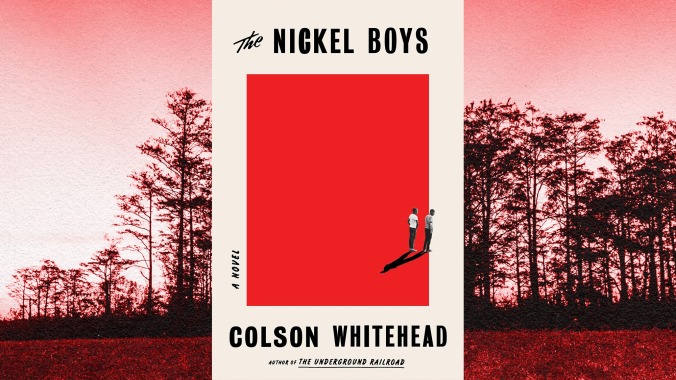Colson Whitehead’s Nickel Boys unearths ugly truths about America’s past—and present

“That’s why they get away with it, because people like you think they deserve it.”
In The Nickel Boys, Colson Whitehead crafts a tale that’s at once familiar and foreign. His gripping, fictionalized retelling of the Arthur G. Dozier School in Marianna, Florida, a reform school whose 111-year history is marked by brutality, moves through time and place—from the 1960s to the 2010s, from a tight-knit enclave in Tallahassee to the sprawl of New York City—unearthing discomfiting truths about our country’s not-so-distant past. The abuses the Black boys and teens who were sent to the Florida School For Boys (as the Dozier School was known) are now a matter of public record, and The Nickel Boys is a requiem for the lives and innocence lost. It’s also, in a way, a rejoinder to the cries of “this isn’t America” that ring out from those in the periphery over incidents of injustice. The unmarked graves of these young men, discovered in 2012 by researchers, are more proof of just how long dehumanization has been a part of this country’s identity.
Whitehead’s protagonist is Elwood Curtis, a bookish teen growing up in Frenchtown, a predominantly Black neighborhood in Tallahassee, in the wake of the Supreme Court’s 1954 landmark ruling in Brown Vs. Board Of Education. Reserved and kind, Elwood seeks to dedicate himself to school and social justice, having worn out a recording of Dr. Martin Luther King Jr.’s rousing “At Zion Hill” speech, a gift from his grandmother who’s heartbreakingly aware of how white supremacy affects hopeful Black youth. But a miscarriage of justice knocks him off the path toward civil disobedience and higher education, and Elwood is delivered to the Nickel School, an institution unfettered by fences but utterly unfeeling in its treatment of its residents. Even as his new, oppressive reality asserts itself, Elwood befriends Turner, another inmate or “student” at the Nickel School. Their friendship is only bolstered by their disparate world views: Elwood cleaves to his optimism, while Turner espouses a more realistic approach; where Elwood works to be vindicated, Turner doesn’t set a goal higher than mere survival.
The Nickel Boys is told primarily from Elwood’s perspective, an outlook that becomes bleaker as his years in the Nickel School roll on. Whitehead’s shown himself to be one of the most evocative writers of our time, placing the reader inside a speeding train in his Pulitzer Prize-winning novel, The Underground Railroad. His prose here is elegant yet straightforward, which helps get inside the mind of the studious, increasingly disillusioned Elwood. Whitehead punctuates his sentences with fragments that are like poignant asides in his life before Nickel School. But the longer Elwood is held there, the more these fragments undermine his confidence—they are creeping doubts that Elwood finds more damning than the unchecked corporal punishment. In addition to capturing Elwood’s shifting state of mind, these short sentences spur the action on, creating a pace that’s almost as breathtaking as the novel’s depiction of cruelty. But just as we come to expect a gut punch, Whitehead changes the purpose of these fragments once more, and they begin to challenge the reader and the protagonist equally: “Elwood never ceased to marvel how you could walk around and get used to seeing only a fraction of the world. Not knowing you only saw a sliver of the real thing. This or this?”
Although The Nickel Boys is a more grounded work than his previous novel, Whitehead loses none of his inventiveness with metaphor; a shed comes to represent the mechanisms that keep white supremacy running while grinding down Black boys and girls. He lends his gift to the Nickel boys, who come up with counterintuitive monikers for the instruments and sites of their torture. Dread is the prevailing mood, but Whitehead still makes room for some humor (grim though it may be). Ultimately, the same device that lifts Elwood’s spirits is what lifts ours: a streak of hope that is fortified by the dismal conditions, an undercurrent of optimism that is as keenly felt as the despair.
Many people will undoubtedly find The Nickel Boys eye-opening, along with Whitehead’s research into the predatory behavior of the men in charge of the Dozier School. The story and Whitehead’s examination are of a piece with the same great literary works he cites in his latest novel, the writings of James Baldwin and Ralph Ellison and Langston Hughes. Whitehead’s novel is certainly revelatory, but more for the ways in which it traces these atrocities to the past and present, weaving tragedy into multiple lifetimes. The Nickel Boys isn’t just a testament to systemic racism; it’s an archeology of pain.